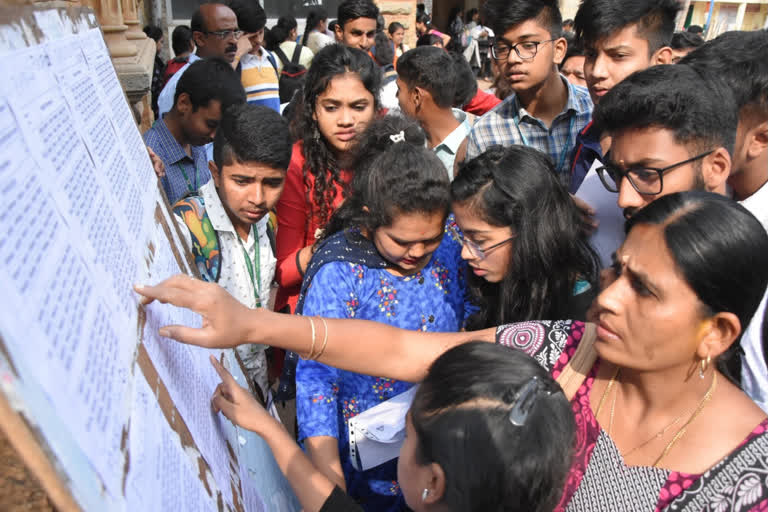Hyderabad: Universities are the seats of higher learning that breathe a new air of innovative thinking, offer soaring wings to creativity and play a key role in unveiling the competent human resources of the society. What is their status today?
Majority of them are suffering from insufficient funds and a shortage of academic staff.
The Parliamentary Standing Committee Report was a real blow to the Union Ministry of Human Resources. For a demand of Rs 58,000 crores from the higher education department for the current financial year, the amount allocated in the recent Union Budget was approximately Rs 39,000 crores!
While expressing dissatisfaction that this amount is insufficient for the creation of basic amenities, creation of academic positions to meet the student-teacher ratio, the Standing Committee has summarized particulars of vacancies at various levels. It reported that 37.7 per cent of the vacancies in the NITs, almost the same level at the central universities, and more than 29 per cent vacancies in IITs -- approximately 78,000 positions are vacant at present.
That is, on an average, more than a third of higher education institutions are without teaching staff.
Touching upon the root cause Niti Ayog member VK Sarasvat said that when compared to the Rs 10 lac crores allocation of China to higher education for a year, our allocation is like a drop in the ocean.
The Standing Committee finds fault with the rationale and priorities of the Education Department for allocation of more than 50% higher education funds to IITs, IIMs and NITs, and 49% to the 865 institutions containing 97% students across the country. The domestic education sector is also suffering from other local issues.
Dr Sarvepalli Radhakrishnan, Chairman of the University Grants Commission, seven decades ago said that reinforcement of higher education is essential from time to time, to meet its ever-expanding needs.
The ignorance of the passing governments in realizing the importance of higher education in nation-building has resulted in an accumulated backlog of teaching vacancies in the universities. Niti Aayog recently proposed the setting up of special education centers to attract 2 lakh students annually to India, which is ranked 26th, as a destination for foreign students.
Modi government proposed around this time last year to extend and Study in India scheme basically to 30 countries and attract students. The real problem is to find suitable candidates with required qualifications for appointment to the already existing academic positions in the universities and also to the newly emerging prestigious institutions. The fact that candidates even with PhD and post-graduation degrees are miserably failing at the interviews shows the falling standards of higher education.
Finding academicians from such substandard stock to shape the future generation is the real challenge. Two years ago, the UGC (University Grants Commission) drafted a new set of guidelines to curb the deterioration of teaching standards in higher education. The subsequent incidents of fake Ph.Ds coming to light were really shocking.
Read: Education is paramount for women empowerment: Padma Shri winner Mohanty
Under the circumstances, the real solution lies in a long term action plan with a deep understanding of achieving higher standards. Governments interest on new inventions and focus on human resource development drives labour productivity and gross domestic product. Education plays a pivotal role in building nations to raise their head high for generations.
Such a noble sector is weak from the foundation stage in this country. According to a UNESCO study declared in the past, India has lagged behind for fifteen years due to poor schooling, despite the fact that it has an impressive spectacle with over 1.5 million schools. Inefficiency at all levels from infrastructure to
teaching staff has been affecting the natural talents of the children. Unless the lethargy prevalent in 19 thousand teacher training institutes is wiped out, the standard of teaching cannot improve. India continues to be at the forefront in the list of 74 countries suffering from a shortage of teachers in different tiers.
Due to this, the quality of education is getting worse. China is attracting back its more than one lakh teachers with PhD degrees serving in overseas universities offering hefty salaries.
There is every necessity here also to encourage highly qualified teachers by offering them suitable positions, remuneration and training them properly. The dynamic knowledge-based community structure that the draft plan of the new National Educational Policy aims, must start from the grassroots level.
Quality education is a golden path to higher education. Such quality education is the real strength for all-round growth of the nation.
Also Read: Educational model in Kerala govt schools garner everyone's attention



